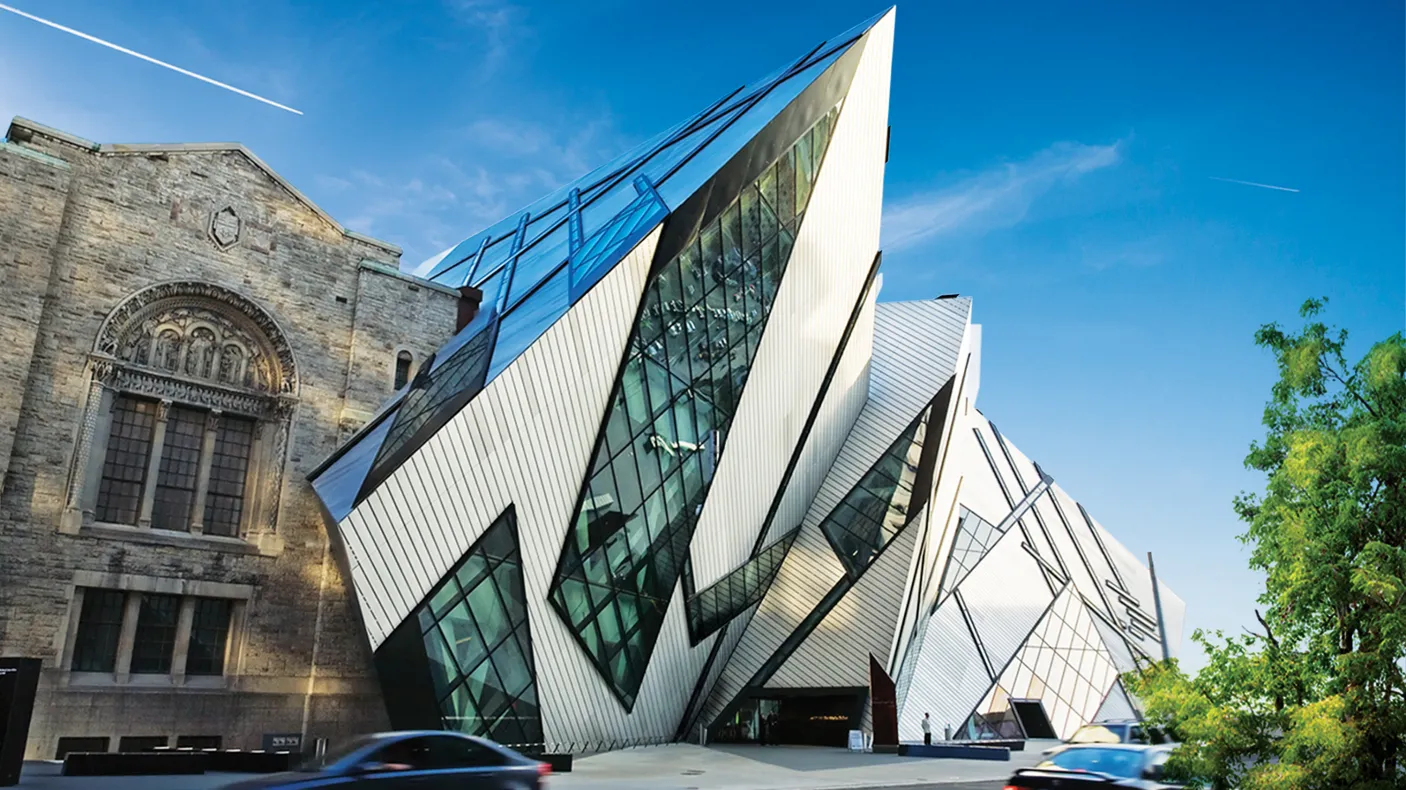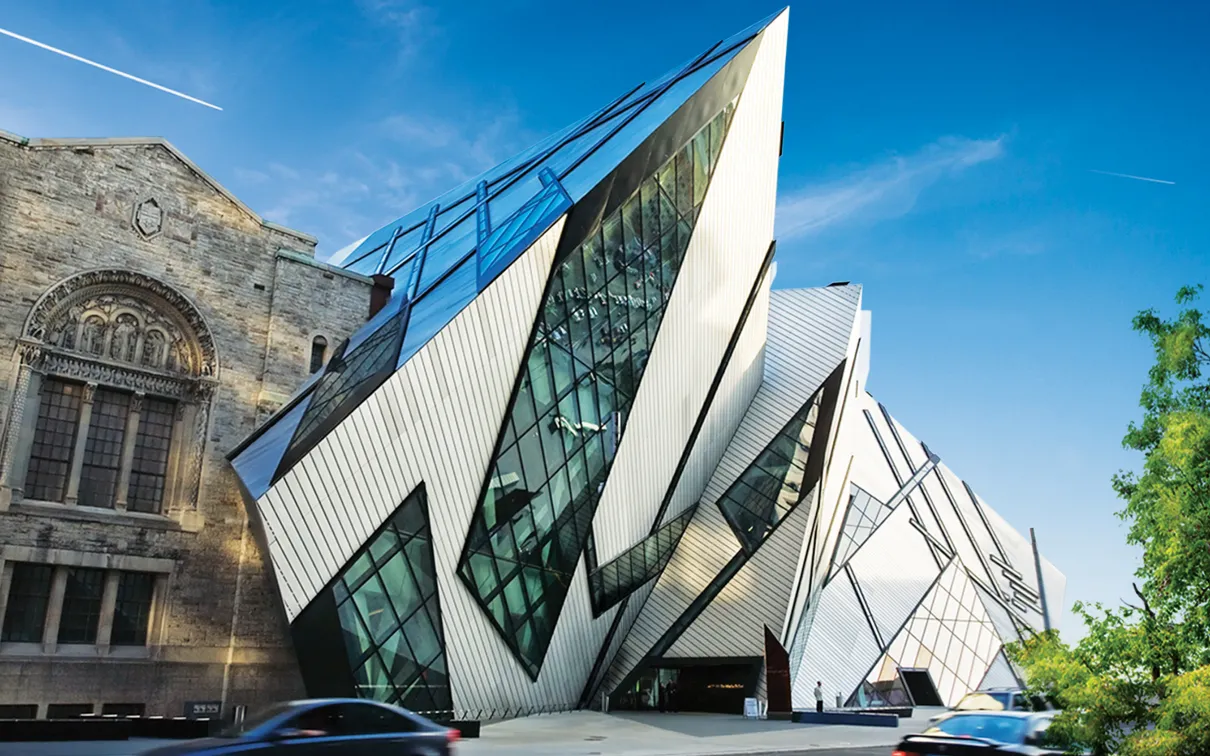Dinosaur Eggs & Babies: Remarkable Fossils from South Africa
Published
Category
Press Release
ROM displays the world’s oldest dinosaur eggs and embryos ever uncovered as part of its Out of the Vaults series
(Toronto, Ontario – April 20, 2010) On display from May 8, 2010 to July 4, 2010 CONTINUING , the Royal Ontario Museum (ROM) presents Dinosaur Eggs & Babies: Remarkable Fossils from South Africa. As part of the ongoing Out of the Vaults series offering visitors an opportunity to see exceptional and rarely-seen artifacts, the exhibition displays the oldest fossilized dinosaur eggs with embryos ever found, as well as other impressive discoveries never before displayed to the public. Approximately 190 million years old and belonging to the prosauropod Massospondylus, many of the rare specimens were discovered in the last six years at a site called Rooidraai in Golden Gate Highlands National Park, South Africa, with the help of ROM palaeontologists. All these discoveries have provided researchers with a new understanding of dinosaur growth and reproductive behaviour at the dawn of their era.
The intimate 75-square-metre (800-square-foot) exhibition is displayed within the James and Louise Temerty Galleries of the Age of Dinosaurs and Reed Gallery of the Age of Mammals on Level 2 of the Michael Lee-Chin Crystal and includes two fully-mounted dinosaur skeletons and 11 other original fossil and cast specimens, among them dinosaur eggs, embryos, a fossilized hatchling and a series of skulls charting the dinosaur’s growth. A hands-on dinosaur hatchling model and audiovisual consoles further illuminate these landmark discoveries and their impact on our knowledge of some of history’s most fascinating creatures.
“This exhibition displays for the first time some of the remarkable ongoing discoveries made by an international team of palaeontologists, including ROM researchers, over the last six years,” said Dr. David Evans, Associate Curator of Vertebrate Palaeontology. “These fossils illuminate in stunning detail how a Massospondylus grew up, from the small egg to a full-grown six-metre-long adult, and are providing new insights into the reproductive behaviour of early dinosaurs. The ROM is very pleased and honoured to be first to display some of these exceptional fossils.”
About the Exhibition
The exhibition’s centrepiece is the fossilized nest of eggs belonging to Massospondylus. Discovered in 2005 by curator David Evans, the nest was painstakingly cleaned and prepared at the ROM for over a year to better reveal the eggs. The nest is scientifically significant because it preserves the most complete set of eggs ever found at the South African site, giving researchers the first good idea of the number of eggs an early dinosaur would have laid. At 190 million years old, nests from this site are the oldest ever found. Since this first nest discovery, further fieldwork at the Rooidraai site has unearthed numerous new nests of eggs which are currently being prepared for study.
Displayed next to this nest is a cast of an egg clutch as well as a section of an original fossilized dinosaur embryo originally discovered at the same site in 1976 by palaeontologist James Kitching. These are the oldest embryos of any known land-living animal. Due to technological constraints, these eggs could not be identified conclusively when first found. It was only in 2004, when the eggs were studied by the research team, that the tiny skeletons of the unhatched dinosaurs within the eggs were painstakingly prepared from the rock. The recovery of the embryos together with related research on the growth of Massospondylus was announced in the July 29, 2005 issue of the prestigious journal Science. The magnitude of the discovery resonated internationally, gaining front-page coverage in the New York Times and USA Today. It was also named a Top 100 science story by Discover Magazine. The landmark discovery of the well-preserved embryos at the Rooidraai site prompted further fieldwork and numerous new egg nest finds in the last five years.
Located on the exhibition’s north wall is the fossil skeleton of a Massospondylus hatchling, together with a series of three skulls and computer animations that illustrate the growth of Massospondylus from embryo and hatchling through juvenile to adult. The embryonic and hatchling fossils filled in key pieces of the dinosaur’s development as it aged, and revealed that these two-legged animals actually began life moving about on all fours and became increasing bipedal as they grew up. Next to the fossil skeleton is a 25-centimetre (10-inch) touchable hatchling model created using scientific data and artistic interpretation to simulate how this baby dinosaur would have appeared in life at about one month old.
Dinosaur Eggs & Babies displays two fully-mounted dinosaur specimens. The exhibition’s east wall features a five-and-a-half-metre (18-foot) cast specimen of Plateosaurus engelhardti, a 210-million-year-old prosauropod closely related to Massospondylus. Prosauropods were the forerunners of the great sauropods. Plateosaurus demonstrates the typical prosauropod body plan, including a comparatively tiny head on the end of a long, skinny neck. Displayed on the exhibition’s south side is skeletal material of Dracovenator alongside a full skeletal mount of its close relative Dilophosaurus. At six metres (20 feet) long, Dracovenator was Massospondylus’ most deadly predator would have been the equivalent of Tyrannosaurus rex for its time.
An Out of the Vaults video explores the landmark South African fossil discoveries from the initial fieldwork through to the preparation and casting of specimens for display at the ROM. Interactive touch screens display animated sequences that illustrate some of the ongoing Massospondylus discoveries made in the last several years as a result of the South African fieldwork and illuminate their impact on dinosaur research.
James and Louise Temerty Gallery of the Age of Dinosaurs and Reed Gallery of the Age of Mammals
The prism-shaped Temerty Dinosaur Galleries and Reed Mammals Gallery boast 1,450 square metres (15,600 square feet) of space and 5.4-metre (18-foot) high ceilings to accommodate the Museum’s tallest specimens. The galleries are home to over 750 specimens, including 50 dinosaur specimens, of which 25 are fully-mounted skeletons, as well as 30 fossil mammal skeletons representing the diversity of life during the Age of Dinosaurs and the Age of Mammals.
Other Information
Dinosaur Family Fun Weekend
Dinosaur Family Fun Weekend
On May 8 and 9 the ROM celebrates the opening of Dinosaur Eggs & Babies with a full weekend of dinosaur fun included free with ROM admission. From 11 am to 4 pm all weekend long, young visitors can dress up as dinosaurs, put together 3-D dinosaur puzzles, and make dinosaur crafts. On Sunday, May 9, families will enjoy a special presentation by Dr. Scott Sampson, star of the popular kids’ show Dinosaur Train, emceed by TVOKids host Kara Harun. Two performances take place at noon and 2 pm. Also on May 9, the ROM celebrates Mother’s Day with a very special milestone—our dinosaur Mascots Gordo and Gertie are becoming parents! Please refer to the Dinosaur Family Fun Weekend news release for more information about this special event.
Out of the Vaults: Dinosaur Symposium
Join four leading palaeontologists on Saturday, May 8 from 11 am to 5 pm as they review their recent work in a special free all-day dinosaur symposium to mark the unveiling of Dinosaur Eggs & Babies: Remarkable Fossils from South Africa. Participants include Robert Reisz speaking on South African dinosaur eggs, Scott Sampson on dinosaurs of the “lost continent”, David Evans describing how to find and dig up dinosaur nests and Jason Head on dinosaur-eating snakes. Entry to the Dinosaur Symposium is free, no Museum admission is required. For more information call 416.586.5797 or e-mail programs@rom.on.ca.
Out of the Vaults: How to Build a Dinosaur with Jack Horner
On Tuesday, May 25, from 7 to 8 pm, palaeontologist Jack Horner lectures on his belief that if certain genetic “switches” are flipped in a chicken embryo that science might be able to hatch a baby dinosaur. He argues that since birds are descendants of dinosaurs, they have dinosaur DNA. By locating certain genes and turning them off, dinosaur characteristics such as a long tail, teeth and fingered hands will reappear. With the knowledge of controlling genes, there is the potential for such achievements as spinal cord and bone regeneration. Jack Horner is the Regents Professor of Palaeontologist at Montana State University and Curator of Palaeontology at the Museum of the Rockies. He was a consultant for the 1993 film Jurassic Park and co-author (with James Gorman, New York Times deputy science editor) of How to Build a Dinosaur. Dr. Horner will sign his book after the talk. Admission is $28 for the public; $25 for ROM members and students. For more information call 416.586.5797 or e-mail programs@rom.on.ca. To register online, visit www.rom.on.ca/programs/lectures/index.
Both ROM restaurants present menu options during the run of Dinosaur Eggs & Babies that pay homage to eggs. c5 Restaurant Lounge, the Museum’s fine dining experience located atop the Michael Lee-Chin Crystal, offers a limited-time Lobster Carbonara lunch special featuring boar bacon, cured egg yolk and hot mizuna for $24, plus taxes and gratuities. Visitors to ROM’s casual family restaurant Food Studio Café can try the “Bronto” ribs with egg fried rice for $9.95, plus tax, a gouda, leek and asparagus egg tart for $5.95, plus tax or the “Dino” egg custard for $2.25, plus tax. The ROM Museum Store offers a variety of dinosaur and egg-related merchandise including plush toys, educational puzzles and games, candy and more.
Dinosaur Eggs & Babies: Remarkable Fossils from South Africa is included in ROM general admission. Adults: $22; Students and Seniors with ID: $19; Children (4 to 14 years) $15; Children 3 & under are free. Half price admission, presented by Sun Life Financial, applies on Friday nights from 4:30 to 9:30 pm. Groups of 20 or more may call ROM Group Sales at 416.586.5801 or e-mail groupsales@rom.on.ca for information on special rates, guided tours and private lectures. Ontario schools should visit www.rom.on.ca/schools/ or call the ROM’s Education Department at 416.586.5801 for information.
This ongoing research in South Africa has been a collaborative project between the ROM, the University of Toronto at Mississauga, the Smithsonian Institution, and the University of the Witswatersrand, Johannesburg, South Africa. The team wishes to acknowledge the help of the South African Parks Service, Golden Gate Highlands National Park, South Africa and the Iziko South Africa Museum. This research was supported by grants from the National Geographic Society and the Natural Sciences and Engineering Research Council of Canada.


